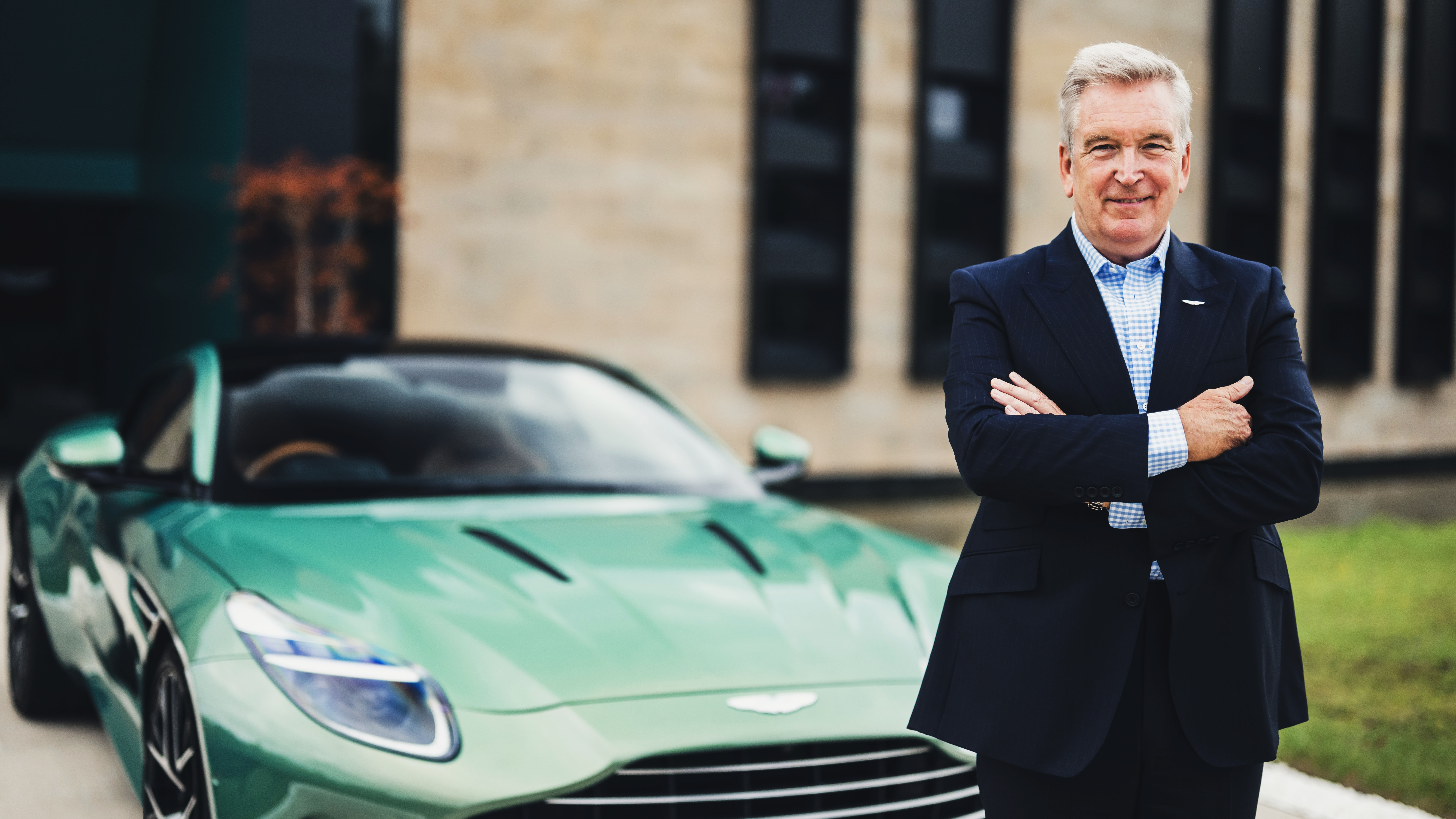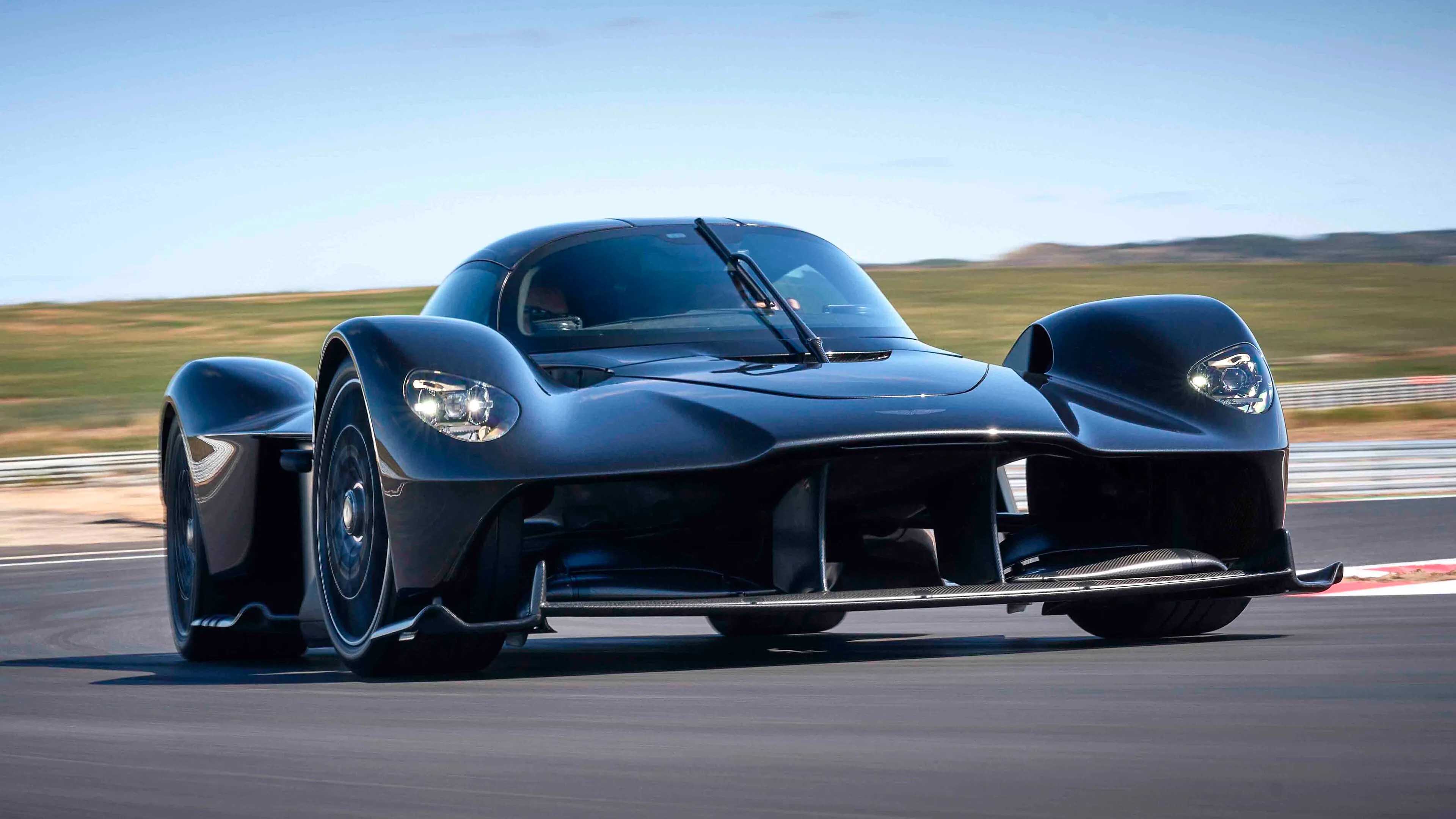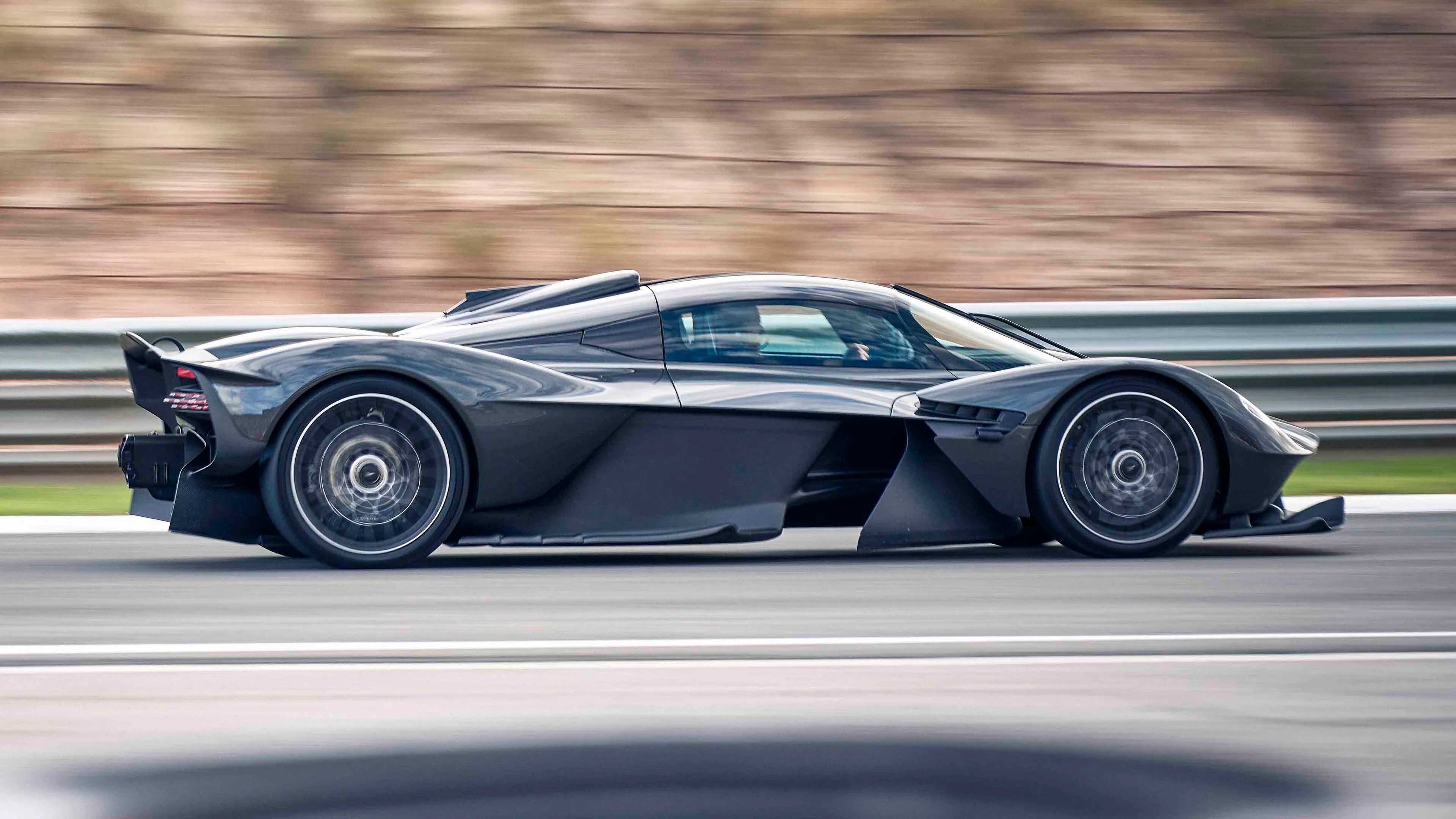
Here’s how Aston Martin will make its EV feel like a V12 Valkyrie
New AM boss doesn’t like fake engine noises, and has an alternative solution
The new boss of Aston Martin nearly crashed an electric Hummer once because he was having a blast. “I was laughing so much in crab mode. I think it’s hilarious, but it’s such fun,” he said.
“I’ve driven the Rivian. Anodyne but European quality and you’d have one. And I’ve driven an EQS AMG.” The roll call of electric cars he’s driven isn’t a brag, but research. And when asked whether he’d be up for deploying fake gearshifts (yes) or fake engine noises (no), he explained how he’d make an Aston electric car sound, well, electric.
“If you mapped the telemetry of a V12 engine – even a Valkyrie race engine, naturally aspirated – measure the frequencies and then built those into the body structure of the vehicle linked to the throttle position and torque load of the electric-motors…
“… and then suppressed digitally by counter waves the nasty high-pitched, cheap sounding electrical frequency noises, you would feel exactly like you’re in a Valkyrie V12 Le Mans car.”
He reckons by physically ‘agitating’ the actual body structure of an electric car, mapped against the same vibrations you’d find in a proper ICE performance car, “you can create the emotional connection with the vehicle”.
The acceleration bit of an EV is of course, a given. “It’s just biology that stops us,” he laughs. “So you can make emotional electric cars, and we’re just at the beginning of that.”
Indeed, there’s still a long road ahead, at least on Aston’s roadmap. Hallmark’s been the boss since September 2024, and the current plan is to go all in on facelifts, on options, and on hybrids; the latter a necessity for a small company facing flip-flopping government cut-off dates for ICE cars, falling consumer confidence in EVs and even the incoming American administration’s disdain for electric.
And then there’s the practical side of making a performance EV. “The problem with battery electric vehicles is it’s very difficult to get that dynamic feel that you get from a genuinely lightweight performance car. Mass is the enemy, and with BEVs, mass is part of the DNA,” he said.
It’s difficult, he contends, because you have to cut everything else to counter the average battery pack’s weight of between 700-800kg, versus an average engine that clocks in at around 150kg.
“I could imagine in time when we finally resolve the problems with solid state batteries, you can take 30 per cent out of the weight,” he said. He also noted 3D-printing to prevent material redundancy. And then technology like four-wheel-steering and other electronics to replicate what you’d get in a lightweight ICE car.
Top Gear
Newsletter
Thank you for subscribing to our newsletter. Look out for your regular round-up of news, reviews and offers in your inbox.
Get all the latest news, reviews and exclusives, direct to your inbox.
“So you can get there, but it requires some significant steps in technology or process to be able to get to the feeling you get in a [Lamborghini] Huracán STO or [Ferrari 488] Pista.
“Not all of our cars are sports cars,” he added. A teaser that the first Aston EV will be an SUV or crossover? Aston hasn’t yet confirmed anything of course – only last year chairman Lawrence Stroll pushed back the launch of the company’s first electric car citing a lack of demand.
About that demand. Hallmark said Aston had two distinct customers, ones that are pro-EV, and a set that don’t just not want one, but hate them “with a deep-rooted passion”. The split between the two is constantly moving, which makes pinning down a date for Aston’s first EV tricky.
“I won’t give a year,” Hallmark said. “We have all of the prerequisites defined and some of them developed. We are fully committed to BEVs. The uncertainty from legislators, especially in Europe and in the US, is disruptive. And so we’ve got to protect the company.
“Between here and 2030, most of our cars will have an engine, but there will be a BEV.”
And it won’t just be a Lucid Gravity with a different badge – Aston remember, is partnered with both Mercedes-Benz and Lucid, the latter providing them with battery systems, motors and control systems for the electric cars (not the electrified ICE cars).
Will this BEV sit on an existing nameplate or take its own line? “We haven’t fully decided,” he said. Watch this space.
Trending this week
- Car Review
BMW iX3










